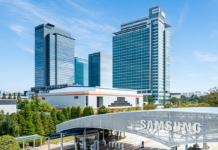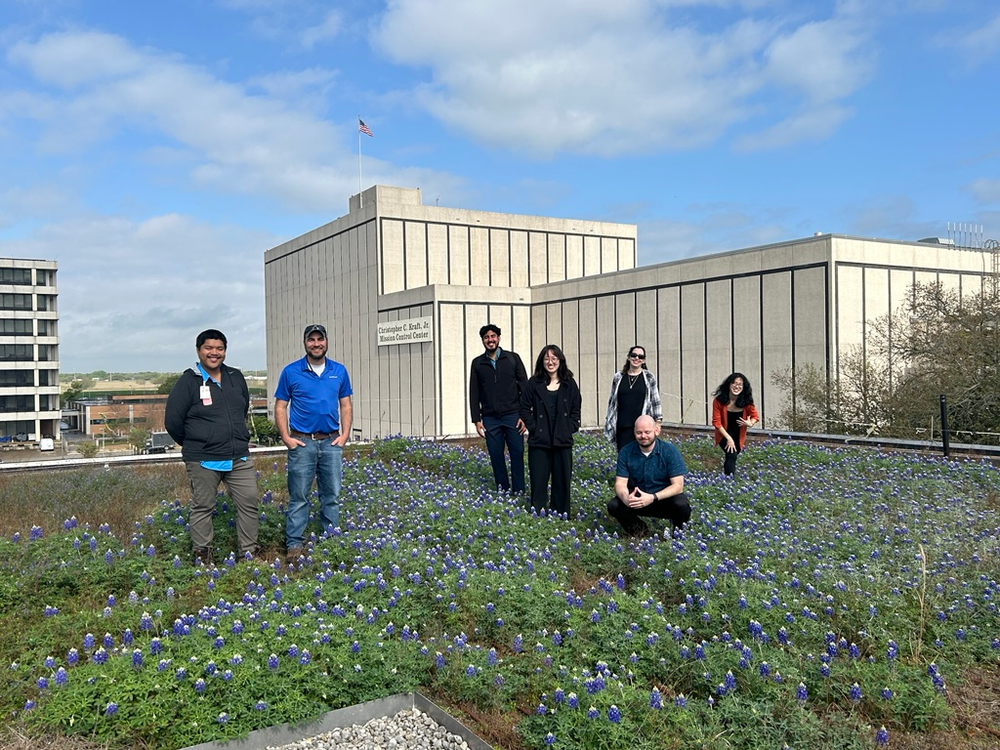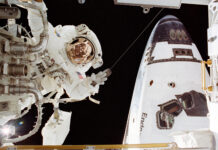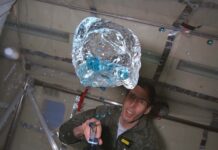NASA’s Efforts to Protect Pollinators: A Sustainable Approach to Biodiversity
Pollinators, including bees, butterflies, and other insects, are vital to human agriculture and natural ecosystems. They facilitate the growth of thousands of plant species and crops that are essential for feeding both humans and livestock. However, factors such as habitat loss, disease, and pesticide use have led to a significant decline in pollinator populations worldwide. This includes native bee species, honeybees, and the iconic Monarch Butterfly. In response to these challenges, several NASA centers have implemented various initiatives to preserve and protect pollinator habitats through sustainable landscape design and other measures.
The Meadow Demonstration Project at NASA Goddard Space Flight Center (GSFC)
In 2015, budget constraints resulted in the removal of plant beds at GSFC to make way for low-maintenance turf grass. To counter this, the Center’s Environmental Management team proposed a more sustainable landscape option, leading to the creation of the 0.1-acre Meadow Demonstration Project. Supported by the University of Maryland Extension Service and Maryland Master Gardeners, this meadow soon became a certified Monarch Waystation. As the meadow thrived, an increasing number of pollinators were observed, demonstrating the project’s success.
Given the initial success, GSFC expanded its efforts by partnering with the USDA/Natural Resources Conservation Service (NRCS) to convert additional areas around the center. This collaboration aimed to perfect restoration methods and test various approaches in GSFC’s ideal environment. The latest addition is a 1.3-acre plot cultivated this year. GSFC showcased this project at the Patuxent Wildlife Refuge Festival in May and the Pollinator Day Festival in June at the USDA headquarters.
GSFC’s Natural Resources staff will also host a Monarch Workshop with the Monarch Joint Venture on September 25th. The event will be partially virtual via Microsoft Teams, with in-person sessions in the afternoon. More information about ongoing and upcoming events can be found on the Meadow Demonstration Project blog.
Sustainable Practices at Johnson Space Center (JSC)
The Johnson Space Center (JSC) is situated in an urban area that was once dominated by Texas coastal prairies. To support the remaining coastal prairie ecosystems, JSC has implemented an altered mowing schedule that promotes wildflower growth. Additionally, JSC participates in the Houston Zoo’s Prairie Pollinator Pathway program, which aims to restore green pathways for pollinator movement in a fragmented urban environment.
In 2012, JSC created a 30,000-square-foot green roof on Building 12. Initially planted with non-native species that struggled in the Houston heat, the garden was replanted in 2022 with native grasses and flowers. To further protect pollinators, JSC employs alternative management techniques, such as relocating honeybee swarms to minimize pesticide use. The center also raises awareness about the importance of prairies and pollinators through various outreach initiatives.
Pollinator Projects at Marshall Space Flight Center (MSFC)
Marshall Space Flight Center (MSFC) has completed two pollinator-focused projects: a pollinator garden and a pollinator meadow. The pollinator garden, constructed by the MSFC Green Team in collaboration with Northern Alabama Master Gardeners, consists of five beds located behind the MSFC Wellness Center. This garden is certified with the North American Butterfly Association and registered as a Monarch Waystation. Maintenance of the garden was handed over to the Pollinator Club in the fall of 2023.
In the spring of 2023, MSFC planted a roughly 2-acre pollinator meadow that includes a mix of native flowering plants. The meadow is mowed once a year to maintain its health and attractiveness to pollinators. In addition to these projects, MSFC has a garden club that maintains individual and club garden plots, attracting a variety of pollinators to the center. The MSFC Green Team and clubs regularly host education and outreach events to increase knowledge about pollinators, their importance, and the threats they face.
Beehive Colonies at Langley Research Center (LaRC)
Langley Research Center (LaRC) is home to beehive colonies following two rescue missions. In April 2023, a swarm of honeybees was discovered under a picnic table near the cafeteria. Dr. Jeremy Pinier, a member of the Colonial Beekeepers Association, along with his 6-year-old daughter Olivia, relocated the bees to a habitat near the community garden. This garden hosts 16 year-round and 24 seasonal plots rented by active members of the LaRC Garden Club. Another hive was relocated in April 2024 from a service vehicle’s truck bed. These bees, now known as “The Artemis Colony,” are thriving, and the center personnel enjoy their honey. LaRC remains committed to nurturing its bee population and preserving the garden for future generations.
Enhancing Natural Beauty in New Mexico
In New Mexico, four pollinator gardens were planted in 2022 at the main entrances to the cafeteria and rotunda, as well as on the south sides of B100 and B101. These gardens were created to offset the natural landscape disrupted by the construction of the Center. They also serve to educate visitors about the beauty and names of surrounding desert flora and provide a peaceful place to view the garden, the Jornada del Muerto, and distant mountains.
The native plants in these gardens are drought-resistant and hardy, attracting bees, butterflies, hummingbirds, and other pollinators. Plans are underway to install a trail camera at one of the garden sites to identify visiting pollinator species. The Center also aims to register these gardens as wildlife habitats through the National Wildlife Federation and Monarch Waystations.
Future Plans and Broader Efforts
Other NASA sites, such as Kennedy Space Center, are developing their own programs to support local pollinators. To stay updated with agency-wide education efforts and new developments in Pollinator Programs, you can visit the EMD’s NRM Program Website.
Conclusion
NASA’s initiatives to protect and preserve pollinator habitats are crucial for maintaining biodiversity and supporting ecosystems. Through sustainable landscape design, education, and collaborative efforts, NASA centers are making significant strides in addressing the decline of pollinator populations. These efforts not only benefit the environment but also serve as a model for other organizations and communities to follow. By continuing to promote and expand these initiatives, NASA is helping to ensure a healthier, more sustainable future for all.
For more Information, Refer to this article.


































